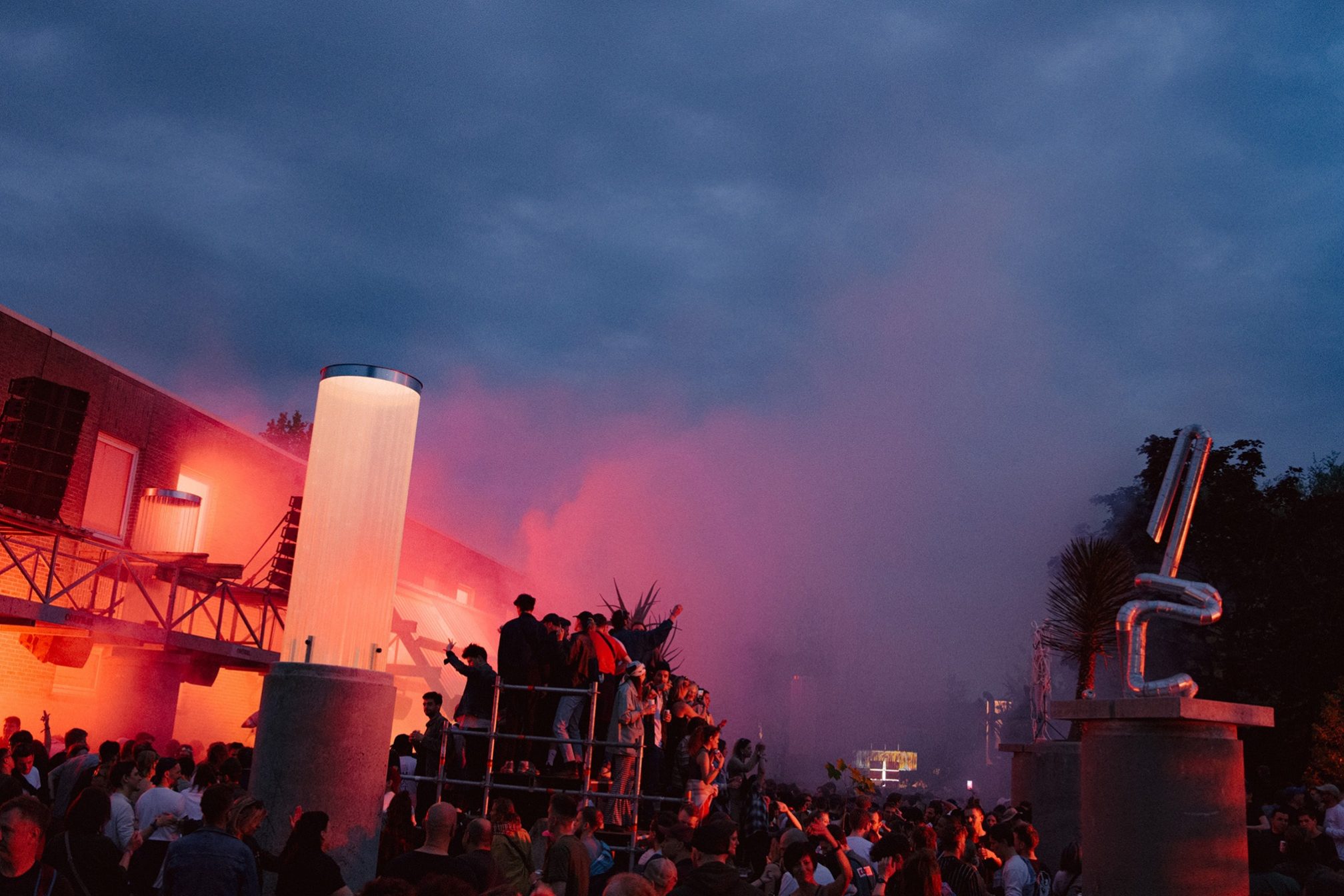 Features
Features
Elevated experience: Horst delivers a vision of festival Utopia
By expertly balancing a cutting-edge line-up, otherworldly art and good old fashioned fun, Brussels’ Horst Festival stands in contrast to an increasingly vibe-absent festival circuit
“I honestly thought it was going to be in a bunker somewhere,” a rain mac-clad festival-goer declares as they slowly make their way out of the industrial site on the outskirts of Vilvoorde, Belgium — the setting of underground arts and music festival, Horst. “Did you not expect this?” replies a friend, emerging from the bushes on the side of the path. This chatter is a constant fixture across Horst’s three days, at least among first timers — who excitedly compare notes such as: “God, these people can dance”, “did you know there was a secret stage?!” and “wait, where’s the big warehouse that was here last year?” Those returning, however, have a serene expression as they cut around the festival — unbothered by toilet queues or manoeuvring the cashless system to get a drink. No, they seem to have realised that Horst isn't a place for the regimented; Horst is a haven for those who like to go with the flow.
Despite having a secure place on many underground electronic music fans' festival bucket lists, Horst remains somewhat of an enigma to the uninitiated. Stunning post-industrial locations, a plethora of vibe-heavy dancefloor vids and consistent chatter of once-in-a-lifetime sets strewn across social media have all become the lens through which those who haven’t had the chance to go, will view Brussels' new underground behemoth. Admittedly, I’m not sure I really understand what Horst is really, really about until the festival’s closing moments — as a spattering of rain-soaked attendees begin embracing each other beneath the red-tinged light provided by the giant disc of the La Soleil Rouge stage, bleary eyed but peaking with curiosity and sentiment as they take in some blissful low-end chug from local hero and Basic Moves honcho Walrus. Indeed, the Horst experience is one of peeling back its multitude of layers — discovering what it is that lies beneath the perfectly-crafted setting, the raucous crowds and sharp-edged aesthetic.

Since its debut in 2014, Horst has worked to combine art, architecture and music - allowing all three forms to co-exist naturally, without one ever seeming to take focus from another. As a result, Horst and its overall vibe changes dramatically every year due to the shifting aesthetic of its stages — varying from industrial caverns, flamboyant festival tents to open-air serenity. The unifying factor of all its editions seems to be an excellently curated line-up and, at least in the last few years, the looming presence of the luminescent cooling towers it sits beneath. The festival has taken place within Asiat Park, a former military site and industrial hub on the outskirts of Brussels, since 2019 and works with a number of local organisations to help develop the dilapidated site into a cultural location. 2023 sees the addition of a number of permanent art projects as part of its theme 'Where the Wild Things Are' - a celebration of rough-edged, urban spaces - including an ambient stage designed by Turner Prize-winning contemporary artist Mark Leckey, which will remain a permanent fixture on the site. Now celebrating its 9th edition, Horst has expanded: Set across six stages and welcoming over 10,000 attendees per day, with a lusted-after roster of some of the most in-demand acts in underground music; it’s no surprise people have made their way from all over the world to experience it for themselves.
Read this next: Guide to Brussels: 6 DJs reveal their favourite spots in the city
It strikes me as odd, that upon my approach to Horst a local attendee asks me “Is Horst popular in the UK?!”. When I respond with my belief that half of London's electronic fans are currently milling around the festival, they respond “I thought it was mostly Belgians and French people, maybe some from the borders of The Netherlands and Germany.” It's hard to wrap my head around how locals might not be aware of the international profile of Horst, though some of that could be that Brussels considers its scene to still be on the smaller-end compared to its neighbours. This can be seen in Brussels' apparent push to bring clubbers to the city, a campaign that has seen a crop of electronic events at the Atomium, a slew of open-air parties in the city centre and, most recently, saw the launch the "Volume Pass" that allows punters to access venues across the city across 48 hours. Though the relationship between clubland and the city's authorities are somewhat strained currently due to the uncertain future of Fuse, the move to "re-brand" Brussels as a nightlife destination remains a priority for the tourist board. However, upon hearing the excited chatter between non-Belgian attendees on-site at Horst, it would seem that Brussels is already firmly thought of as a nightlife destination. Despite the humble attitudes of the Bruxellois, everyone seems to be united in their reverence for the city — comparing bucket list stops such as iconic venues Fuse, C12 and La Cabane, the city's abundance of festivals (alongside Horst it boasts Listen!, Paradise City, Core and more) and electronic institutions' such Crevette Records, Kiosk Radio and Tropicall.
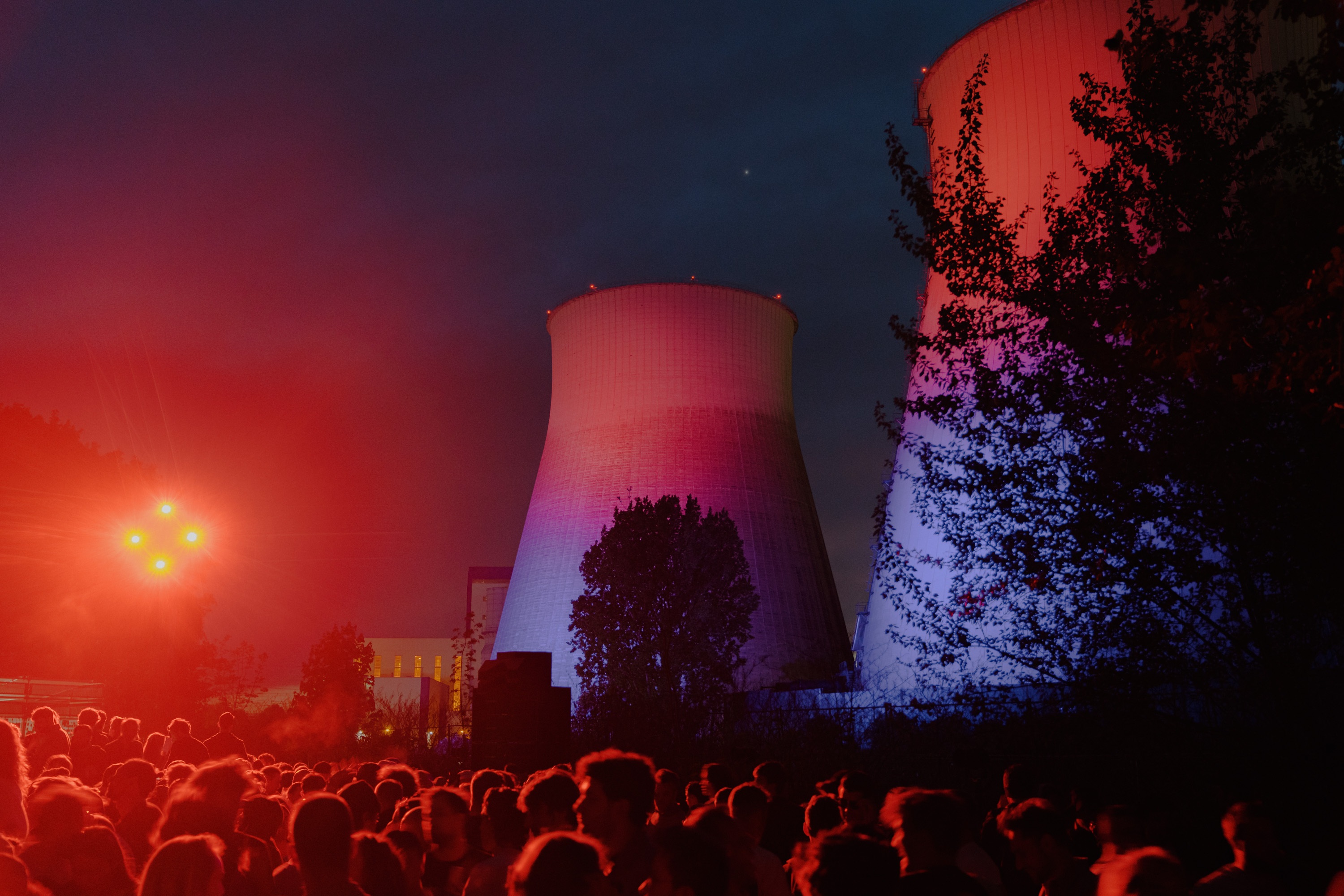
Across Horst's three days, I realise the crowd is probably one of my favourite things about the festival. A mixture of nationalities, interests, aesthetics and ages; attendees seem to be evenly dispersed between ultra-edgy electronic aficionados, art school thinkers, rowdy festival regulars, mature dance heads and groups of pals donned in football shirts and silly hats. So far, so European festival. What really sets the Horst crowd apart is the openness in which they conduct themselves. The festival's layout and, as a result, intimate nature means that no one seems to be a stranger to each other ever. There are no cliques, no cool crew hanging around the edges or group of lads in bucket hats pressed right to the front — instead the entire crowd seems to be dancing together. Similarly everyone seems to be engaged with everything that is playing, yelling and whistling with the same fervour at drops of obscure Belgian new beat anthems to Beyoncé chart toppers. The audience is as present and reactive during DJ Perception's 3:PM speed garage offering as they are during the dark, synthy depths of Nosedrip b2b Aroh at past midnight. Talks and seminars put on during the day at the Vesshcell are near-always packed, and from the early afternoon until the festival's closing hours, even the smaller stages seem to have a consistent rabble outside, keenly taking in the varied music offering. All in all, it's difficult not to get wrapped up in how "up for it" everyone is.

Of course, it would be foolish to really talk about the highlights of Horst festival without mentioning its stages. The festival works in collaboration with a series of well-known architects on every edition to build its unique spaces; 2023 sees the addition of four new stages: Eyes Eyes Baby, La Soleil Rouge, roll pitch yaw surge heave sway and State of Play, which join the already established Moon Ra (added in 2021) and Vesshcell (FKA the Rotunda). The "main stage", aka State of Play, is a large arena tucked away at the bottom end of the site and consists of a soundsystem set against the exterior of a former warehouse, which at night has a colourful array of lights seeming to beam from its empty windows akin to Block9's Genosys Sound System stage, while dancers gather around an array of concrete sewage pipes designed by Ghent-based architecture studio Stand Van Zaken. However the second biggest stage, the outdoor La Soleil Rouge - named after the large red sun disc, it sits beneath and designed by Parisian duo BRUTHER - easily manages to attract a similar number of punters throughout the weekend.
Much of the action takes place outdoors, but it's hard not to become entranced in Horst's only indoor stage, Eyes Eyes Baby, which is set within a warehouse. Upon entering via an immense PVC strip curtain, punters are treated to a giant red orb in the centre of the room and light boxes suspended from the ceiling from a rope, swinging with movement that is just hectic enough that many second guess if they are "supposed to do that" or someone might need a trip to the clinique before the weekend is through. A real highlight is the Vesshchel, formerly the Rotunda, which made its debut last year but has been slightly changed from Salottobuono's original design. Replacing its black canvas roof are strips of recycled fabric that hang loosely from its metal structure — an amendment that makes the space resemble the grainy images from the Space Ibiza terrace during it's early noughties hey-day, with a low but light ceiling that feels immense, but simultaneously warm and hospitable. Though it's difficult to really pick any favourites, every single stage seems to draw you in as you walk past, I find myself unintentionally forgetting where it was I was going on a number of occasions by offerings from Moon Ra and roll pitch yaw surge heave sway.
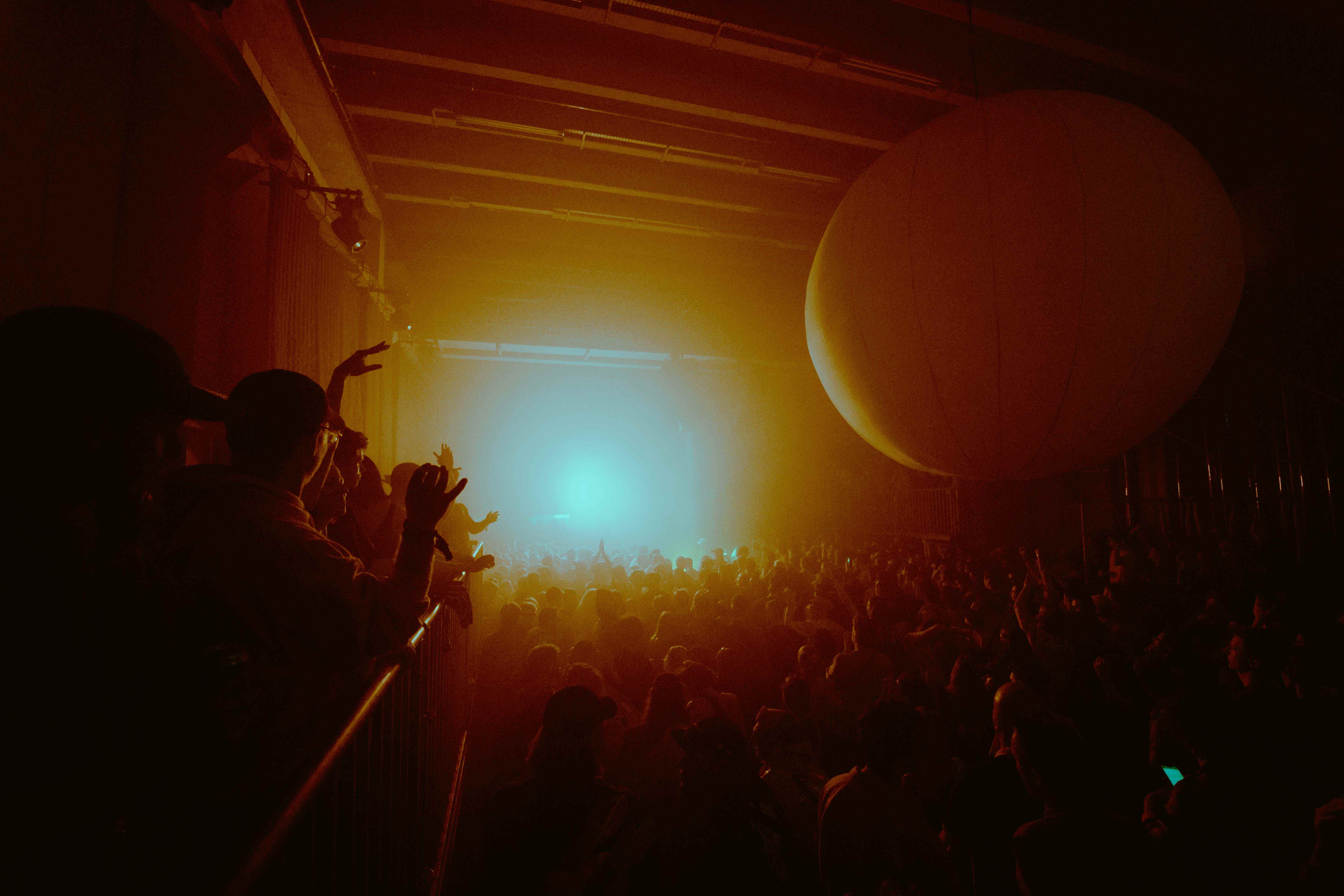
The transience and spectacle of the stages is mostly down to Horst's symbiotic role within its setting, committing to helping develop the site into a permanent cultural hub rather than a temporary installation. Indeed "Horst" doesn't begin and end with this weekend, instead it began in early April with the welcoming of volunteers onto the site for "Horst Atelier" — a project that enlists the festival's fans to come help put the festival together, whether that is building stages and art installations, providing arts programmes or assisting in the production. The volunteers are given tickets to the festival, and considering the sheer scale of the site, it's no surprise there is a familial atmosphere throughout its three days, with an army of people on-site admiring the spaces they have helped create. Once the main festival has been "deconstructed," Horst EXPO will kick off, running from May 18 until the festival's new summer events programme, a series of events on the festival site which are set to take place from June 24 till July 29; The "summer opening" will feature sets from Avalon Emerson and Roi Perez, as well as new art/performances from DEEWEE, Farah Al Qasimi, Sharon Van Overmeiren, Joe Namy and more. Many of the art installations due to feature during the Horst EXPO are spattered around the site during the festival, meaning that even when heading over to a picnic bench for an obligatory disco sit and a cigarette - you can find yourself accidentally stumbling upon some of the commissioned pieces.
Read this next: "A total experience": How Fuse is transforming Brussels into a techno hotspot

With such a keen focus on the site's visual art, you would be forgiven for thinking that the sound and music curation could have been a bit of an afterthought from the festival. But, it's clear while roaming the site that organisers have put just as much care and attention into the sonic experience as everything else. It's hard not to be constantly sucked in by what is echoing from each arena, regardless of if you know who is playing or not, with each stage striking a perfect balance of having soundsystems that are loud enough to be alluring for passersby, while engrossing enough that it feels as if you're dancing at the only stage around. It's surprising on the approach to Horst how contained the sound is; there's a barely audible murmur upon getting dropped off on the residential street near the festival's entrance, and just a faint boom heard as you approach the ticket queue — something that is hard to imagine three hours later, as you can physically feel every hi-hat radiating from the outdoor La Soleil Rouge stage during SASS's set on Friday evening.
SASS (made up of Peach, Moxie, Shanti Celeste and Saoirse) deliver a typically blithe and bouncy club-centred offering for their four-hour extravanganza, treating the packed-out crowd to a selection of silky UKG cuts, percussion-heavy house, high NRG club and blissed out rollers. The set feels like an opening ceremony of sorts, spanning the quartet's eclectic taste — they prelude a good chunk of what is expected as the festival goes on. With La Soleil Rouge being the first point of call for anyone coming into the festival it seems that much of the congregation had gathered here - many on their tip-toes at its edges attempting to get their bearings. However, as you delve deeper into the site, it becomes apparent that that the other stages are also spilling with the raring-to-go crowd — just at the beginning of their Horst journey.
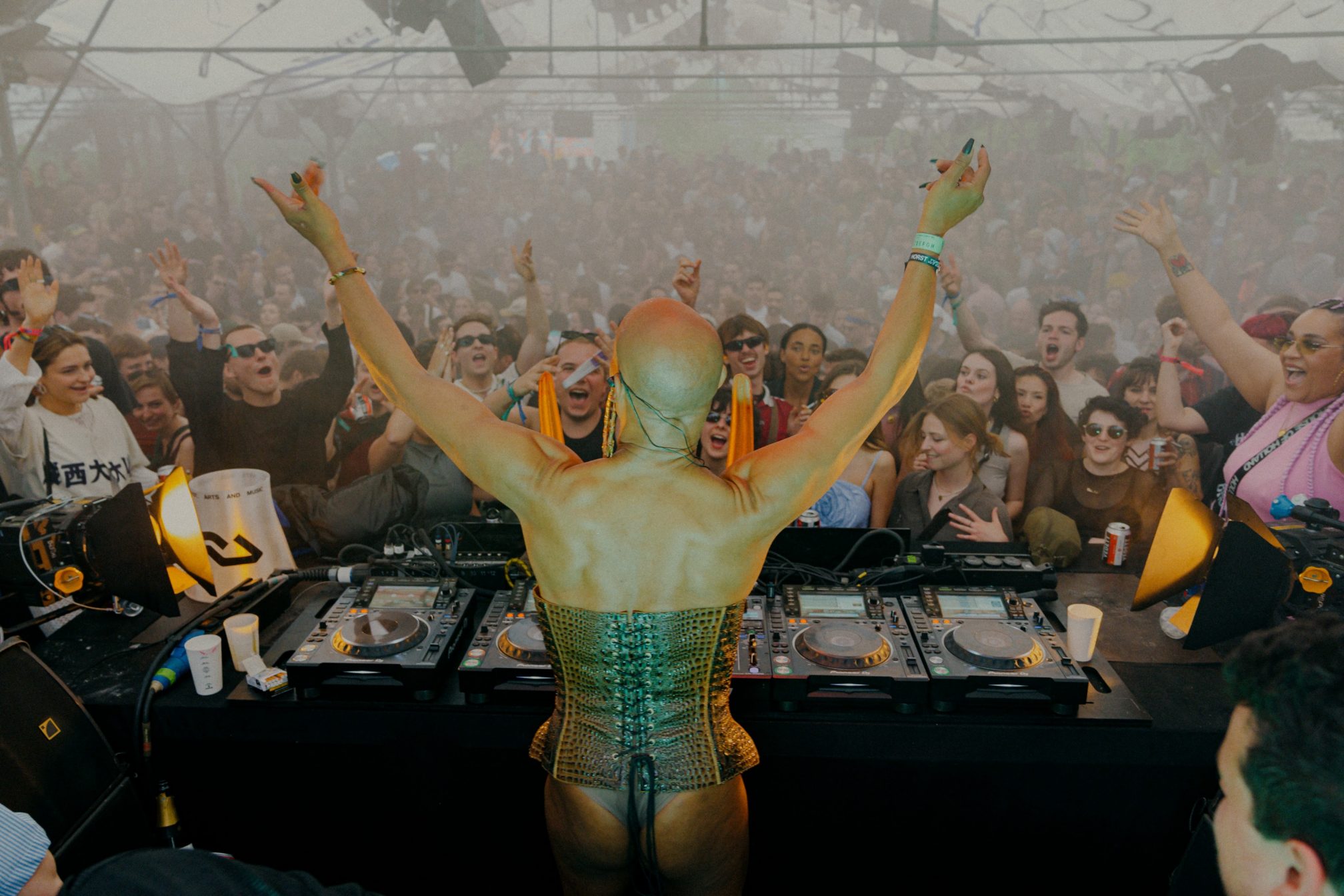
Over on State of Play, a sea of dancers are taking in boisterous donk and all-out slam courtesy of DJ Fuckoff and Narcissus, throwing arms around each others shoulders and spilling their drinks with the sheer ardour of lifting them to the sky during a tongue-in-cheek 'U Sure Do' edit. Similarly, over on Vesschell, Mexico City's Rosa Pistola has attendees tripping over themselves to catch her manoeuvre between giddy hard house and sexy Latin club, closing out with wall-to-wall club favourites — it's rousing to the point where I catch more than a couple of groups aiming to leave, but finding themselves walking straight back into the crowd's depths. Taking care of those wanting something a bit more of the low-end, local "bad boys" Nosedrip and Aroh are setting spines tingling with some wide-spanning, atmospheric trance — transforming the indoor Eyes Eyes Baby stage into something akin to a church, with the crowd rendered motionless as they cast their eyes towards the looming red sphere overhead. It's clear Friday's standout is its last minute addition, as Blumitsu (aka Jossy Mitsu and Bluetoof) - who have been enlisted to cover Skin On Skin's closing slot at the Vesshcell - are subjected to an endless cacaphony of whistles and cheers as they flit between hard-edged electro, deep bass and hair-raising breaks.
Read this next: "An emotional tour de force": New book reflects on three decades of Belgian electronic music
By Saturday afternoon, there are visibly more than a few sore heads as we approach the noticeably quieter festival site — with much of the crowd split between the For All Queens! takeover at the Vesshcell and DJ Perception's ebullient speed garage at La Soleil Rouge. Despite the somewhat soggy conditions through the festival so far, the sun makes a brief appearance as the beloved UKG selector makes his way through ebullient speedy gs and some downright naughty basslines — yielding the kinds of screams of joy rarely heard from anyone but the London garage faithful. BBC 6's Jamz Supernova follows, matching the tempo with some raucous Afro house and breaks, before effortlessly bringing the tempo down to dish out some soul-affirming disco and latin club cuts. Over on the Vesshcell, the For All Queens! showcase is amping things up a little — mixing between genres with sets from Josh Caffe, Kevin Aviance, ARAKAZA and Kongi, all hosted by MC Zelda Fitzgerald. Throughout the showcase, that consistent energy from the crowd that I mentioned earlier is in full-force; wrists are flapping as ferociously for the techno-meets-ballroom-meets-East African blend of Burundi-born, Amsterdam based DJ ARAKAZA as they are for Josh Caffe's early doors, full throttle house drops. A particularly poignant moment comes as US drag legend Kevin Aviance drops Beyoncé's 'Pure/Honey', a track that samples his 1996 track 'Cunty' – clearly touched as the audience comes to crowd around the decks, waving his gold fan through the air.

The combination of Rino's out-of-this-world bleeps and bloops and Kuba'97's chuggy trance act as a panacea for the night before, as evening approaches and site to fill up — with the dark recesses of Eyes Eyes Baby acting as an isolation chamber for those inside, allowing the each deviating vocal sample and shuffling synth stab to radiate through your entire body. In demonstration of Horst's musical polarity, just outside, at La Soleil Rouge, Calibre is shelling out a footwork-heavy set to those who can handle direct sunlight and anything quicker than 140. Of course, for anyone wanting that kind of sonic whiplash to be contained in one set, Atlanta hero Nikki Nair takes over the Vesshcell for a penetrating hour-and-a-half – blending bassline, grime instrumental, fidget house and some obligatory pop edits, such as a dubstep rework of 'Perfect Exceeder' and an electro-heavy version of Caroline Polacheck's 'Bunny Is a Rider'. By Sunday, much of the festival's attendees are on one particular mission, and that is to catch new beat savant Job Jobse - who, from the lively videos strewn across social media of his set at the festival last year, has surely been responsible for selling a good portion of Horst's weekend tickets. Now on the main stage, the Dutch DJ has crowds packing in for some typical old-school-meets-new-school euphoria — setting a sea of arms akimbo, and attendees scrambling across platforms to get a better look. At one point, a crowd member climbs the exterior of the warehouse State of Play is set against, dancing across the disused balconies before hanging upside down off one of the rails — is this the Job Jobse effect? The Horst effect? The three days of no sleep effect? Who knows.
For those who have managed to pull through to the festival's final moments, Sunday's closing sets present a real Sophie's choice — with equally unmissable sets from local favourite Walrus, Evian Christ, sultry-house siblings S-candalo and a b2b between drum 'n' bass legend dBridge and Italian techno neoteric Donato Dozzy, all running concurrently. I start out with Evian Christ, who brings a little slice of Trance Party to Brussels with his requisite blinding strobes and nostalgic trance bangers; I would be liar if I didn't admit that I nearly lost my voice screaming as he pounded through Tiesto's 'Adagio For Strings' just a few tracks in. In the pursuit of getting a well rounded vision of Horst, we spend the closing 40 mins at the La Soleil Rouge stage taking in grinding, unyielding kicks from local hero Walrus who - seemingly in pursuit of staying away from the flashy, high-tempo conclusion that has become customary for most closing sets - delivers something that feels like the perfect end to Horst, bringing everyone back down to earth without skimming on atmosphere or energy. Despite the fact it's lashing it down with rain, the crowd are still moving and embracing each other throughout the low-end percussion — simply putting their hoods up, or tightening their rain macs if it gets any harder, refusing to remove themselves from the dancefloor.
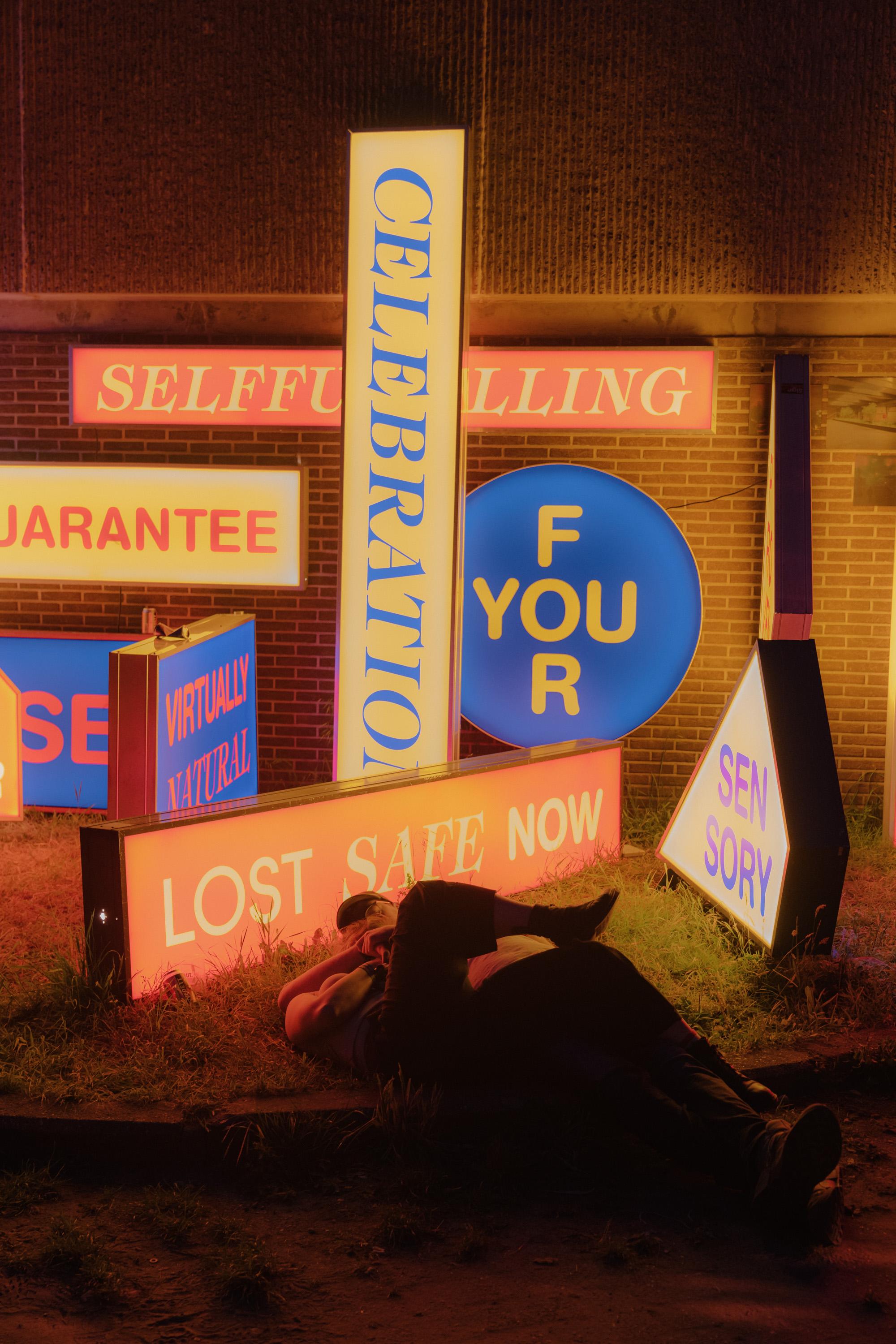
There are minor hiccups during Horst's three days, but none of it really seems to be anything the festival can't quickly fix for the next edition. It feels slightly overcrowded on Friday in comparison to Sunday, which appears to be more sparse — with pockets gathered around stages rather than across the site. The jury is out on festival adopting a cashless system, and there are only a handful of top up stations dotted around, with more than a few confused faces visible walking away from the bars and vendors. Due to the transient setting, many of the volunteers aren't as familiar with the site as they could be — so without having some knowledge of how Asiat Park is laid out, it's difficult to find anything without going on a reconnaissance mission first; which leaves me wondering how many people missed out on seeing parts of the festival that aren't as easy to find as the main stages. No festival is perfect, however, and as I take in the crowd dancing, drenched in rain and red light, I think Horst comes pretty close to how they could be.
Read this next: Why the hell aren't you dancing?
Now, admittedly I cringe at the idea of saying "not a phone in sight", but unfortunately the Horst crowd prompted me. It was a breath of fresh air to see the masses dancing and lost in the moment, particularly in comparison to day festivals in the UK that seem to be stood at a standstill mostly these days. Maybe it was the lack of phone signal, maybe it was because everyone was far too intoxicated to work out how to unlock their iPhones, maybe it is that Horst has created a familial atmosphere due to its unusual set-up, but there as a noticeable, tangible difference in how the dancefloor moved and interacted with the music. Low-end, chuggy tracks felt like they were hitting you at 1000 MPH and full throttle industrial techno sounded so clear on Horst's soundsystems that it was almost-delicate and rhythmic. But then, I realise that this is actually how festivals should be. Going to a festival should be as much of a treat for the eyes as for the ears, it should be something that contributes towards the growth of the local artistic community, it should be a place to see incredible architecture and hear music that you never expected to... not just the handful of artists you had on your list. You should be having a nice time and dancing at a festival, not so bored you're on your phone checking to see what your sister's boyfriend's mum's dog is up to. So maybe it isn't that Horst is a perfect festival, but instead it's an example of what can happen when it's done right.
Didn't make it to Horst festival this year? Tickets are now on sale for Horst's Summer Events, with entry to the opening party on June 24 starting at € 25. Get yours here.
Megan Townsend is Mixmag's Deputy Editor, follow her on Twitter


